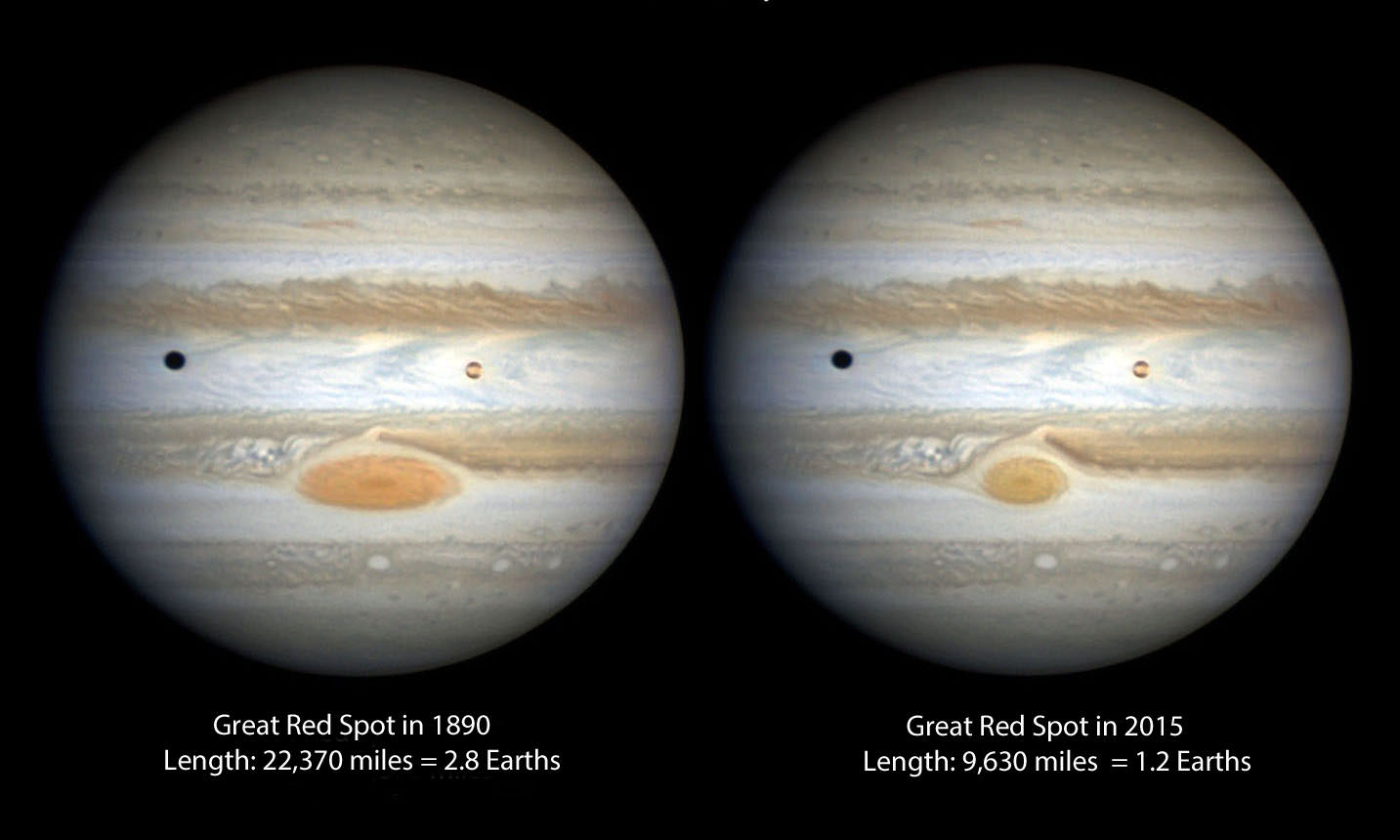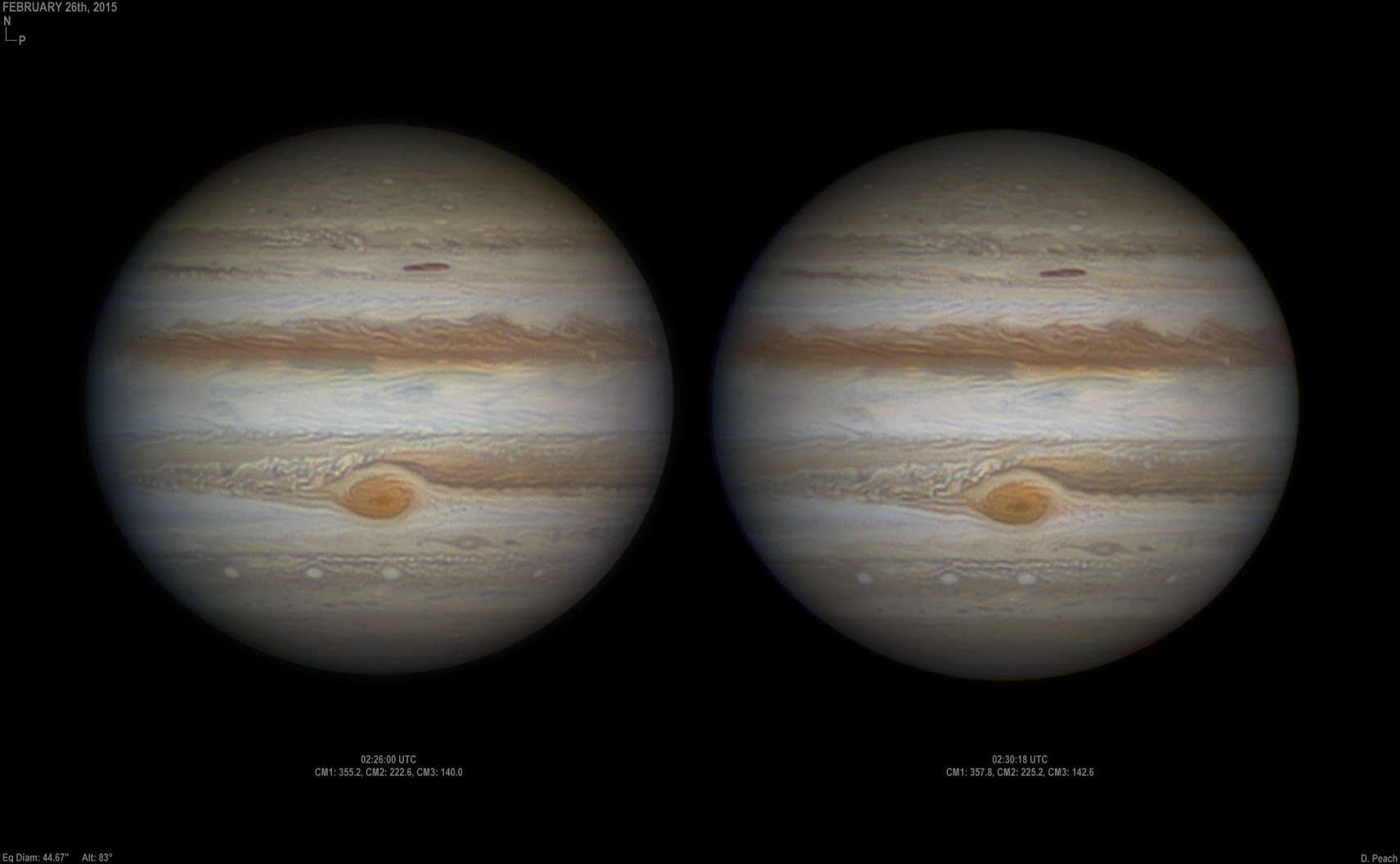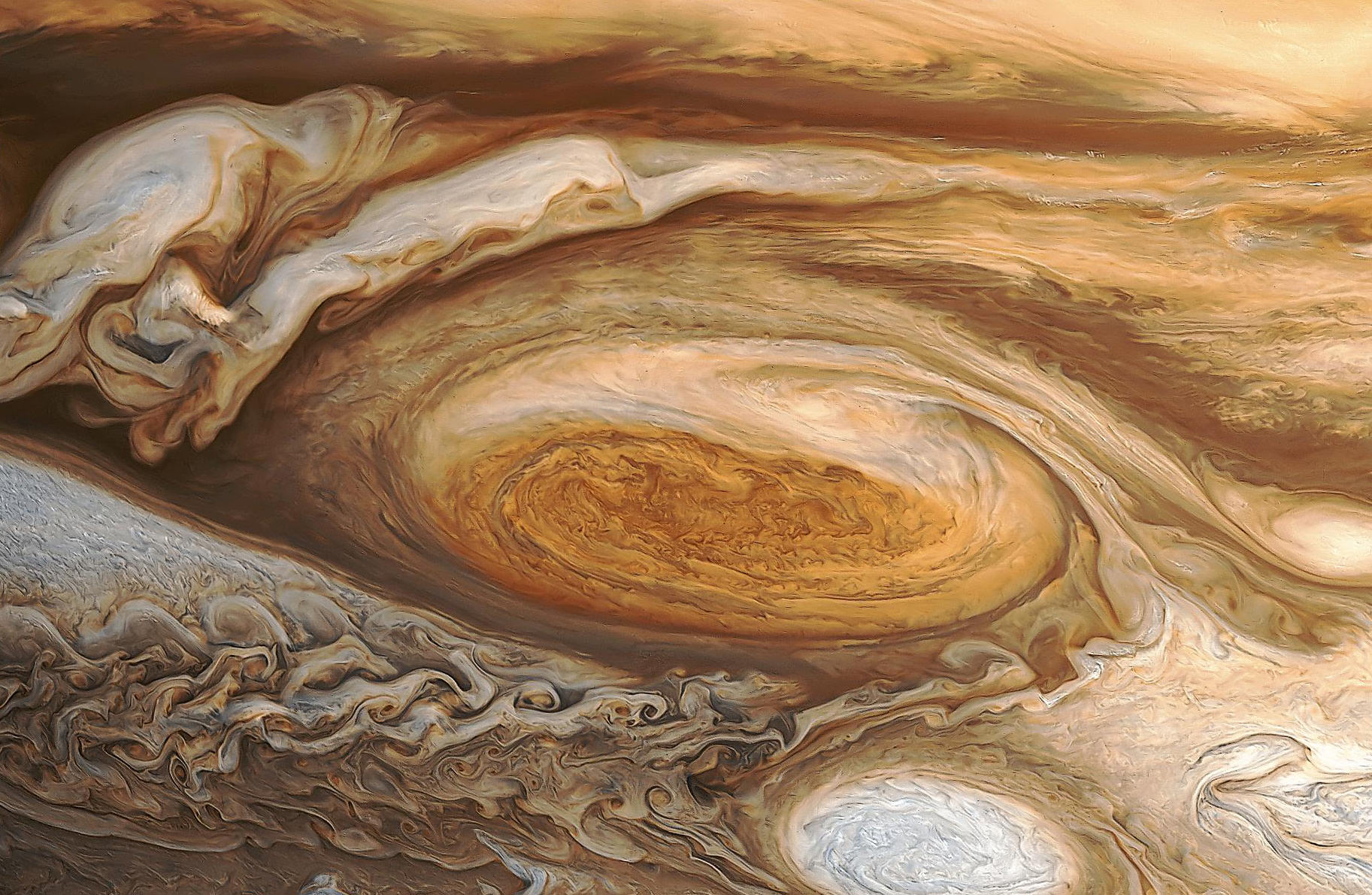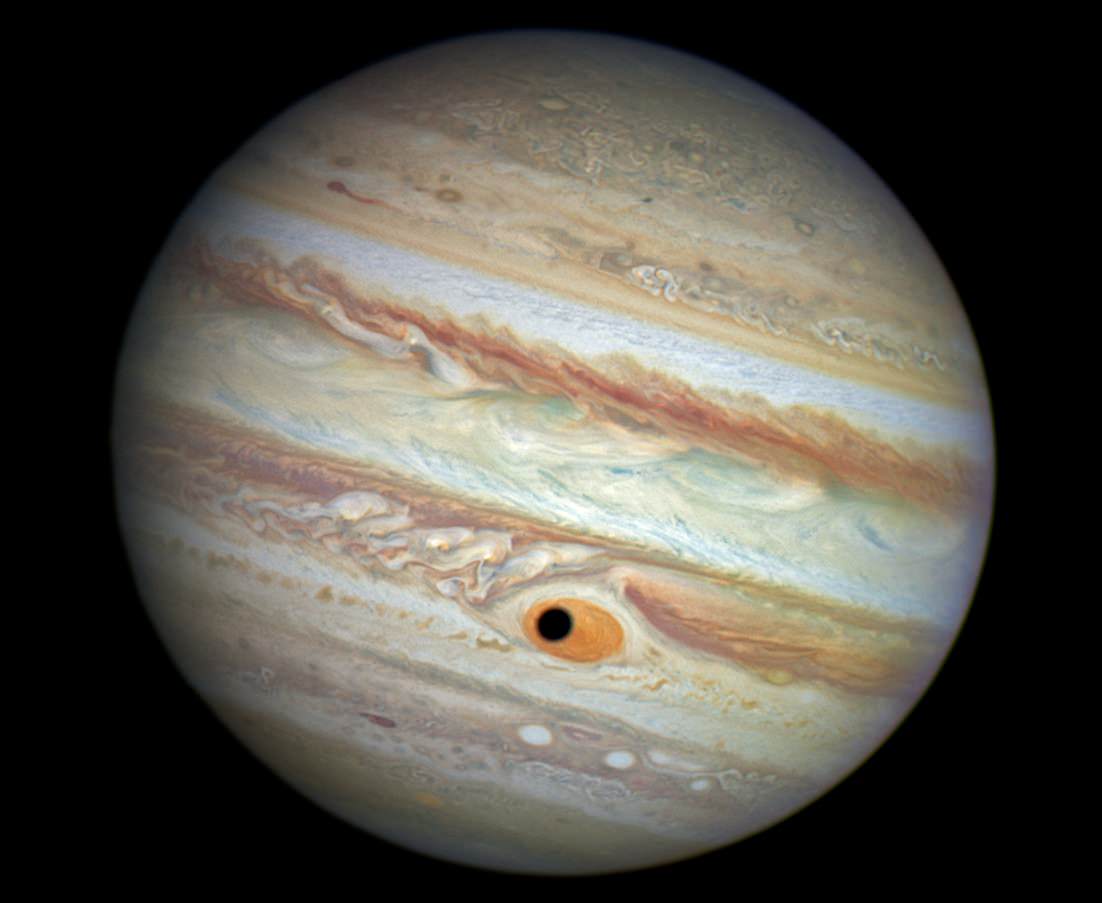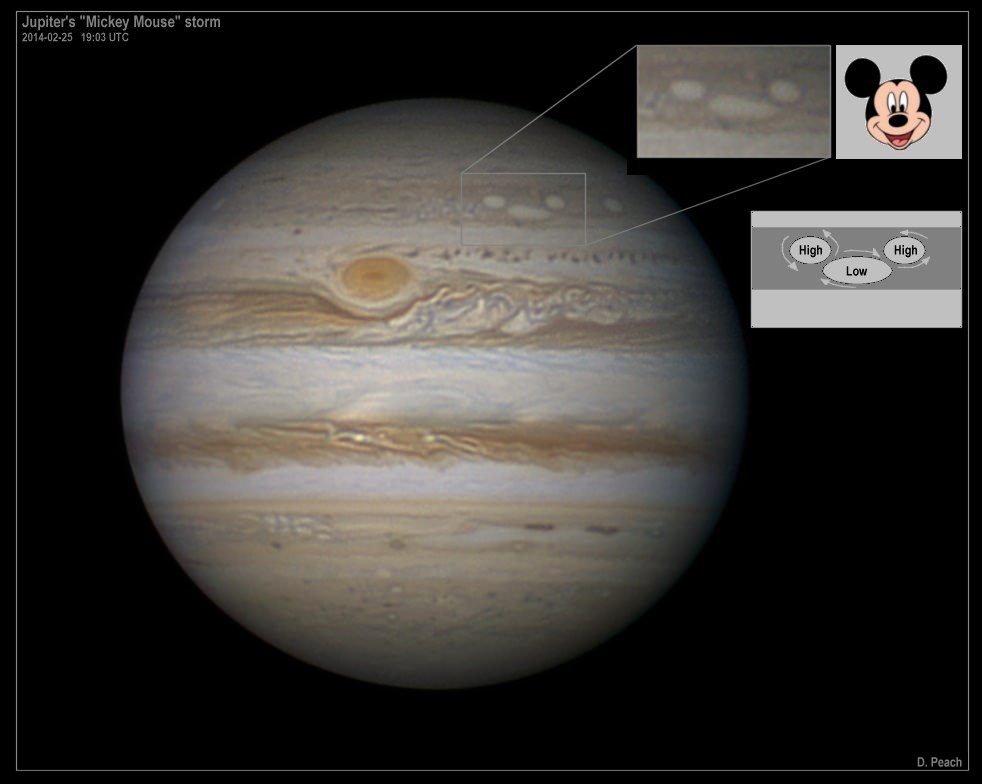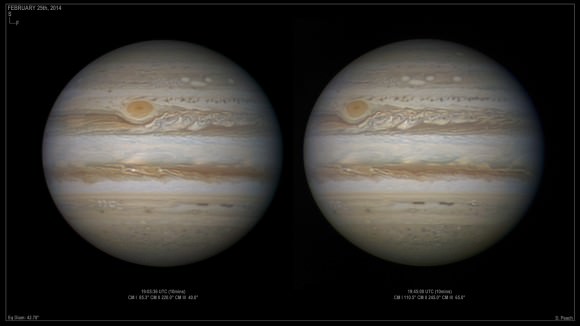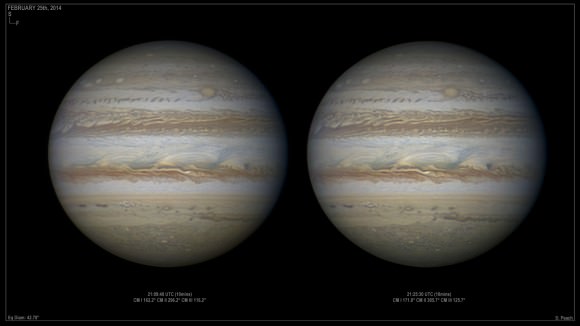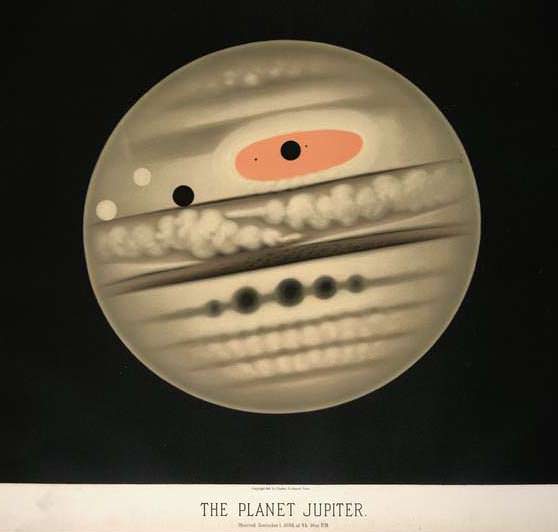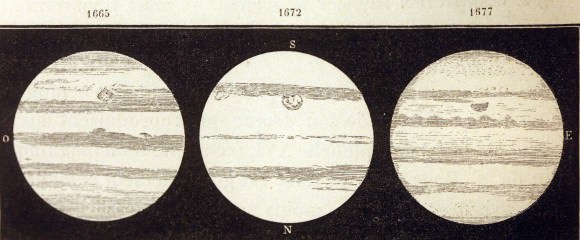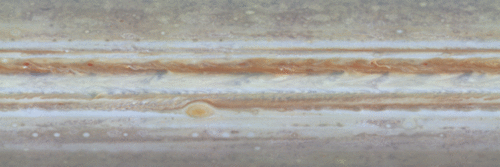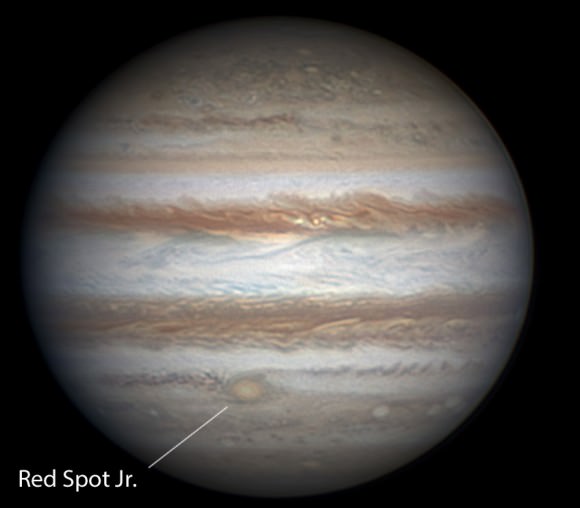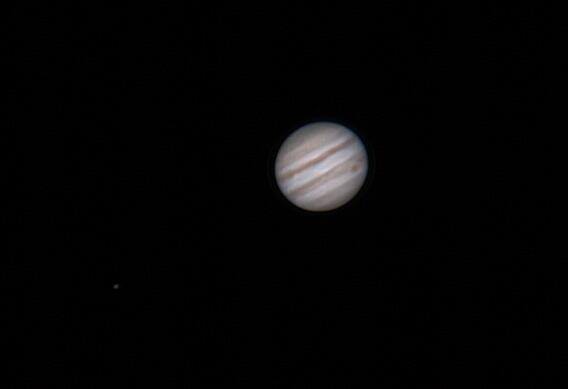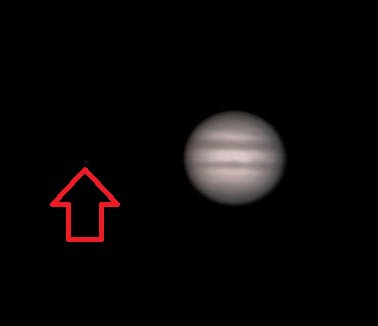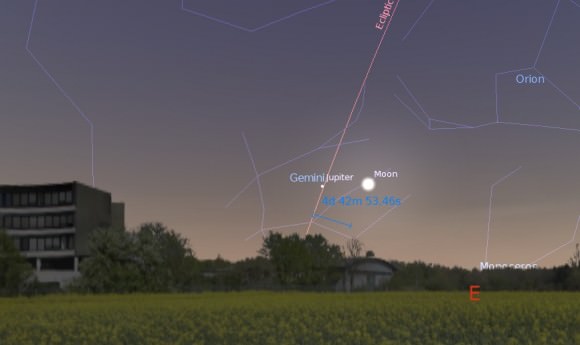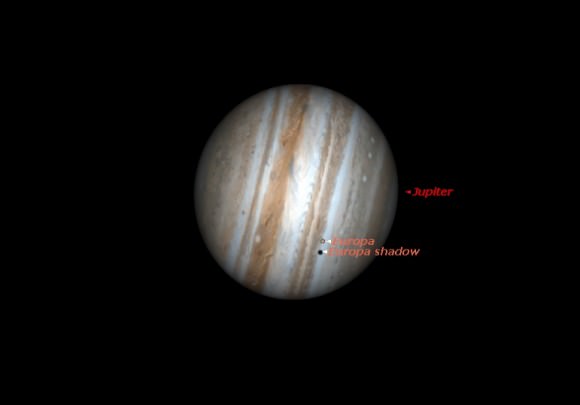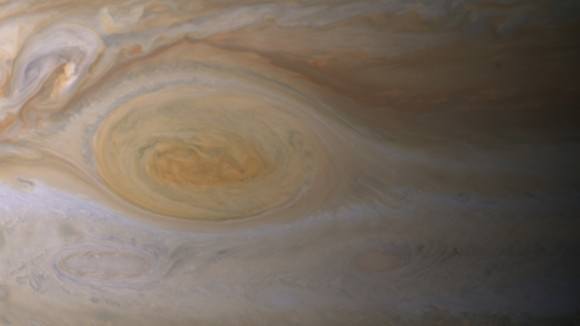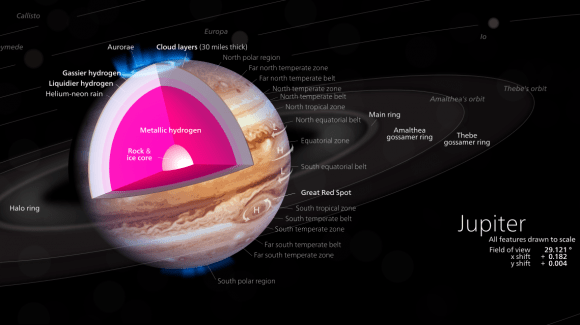Maybe it’s too soon for a pity party, but the profound changes in the size and prominence of Jupiter’s Great Red Spot (GRS) in the past 100 years has me worried. After Saturn’s rings, Jupiter’s big bloody eye is one of astronomy’s most iconic sights.
This titanic hurricane-like storm has charmed earthlings since Giovanni Cassini first spotted it in the mid-1600s. Will our grandchildren turn their telescopes to Jove only to see a pale pink oval like so many others rolling around the planet’s South Tropical Zone?
Maybe.
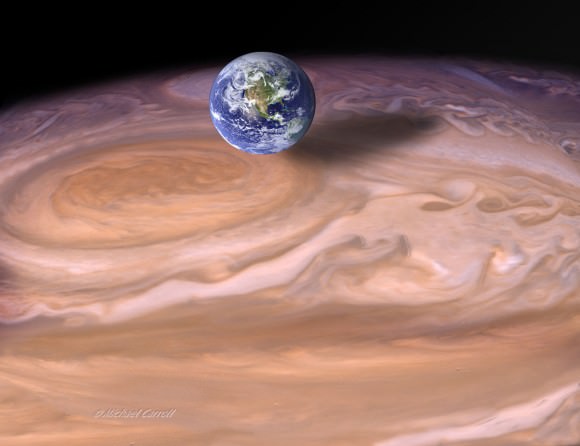
An inspired image prompted this sad train of thought. UK astrophotographer Damian Peach came up with an ideal way to depict how the GRS would look to us now if it we could see it as it was in 1890, 125 years ago. Those were the glory days for the “Eye of Jupiter” as Cassini was fond of calling it. With a diameter of 22,370 miles (36,000 km), the GRS spanned nearly three Earths wide. What a sight it must have been in nearly any telescope.
Peach compared measurements of the Spot in black and white photos taken at Lick Observatory in California in 1890-91 with a photo he took on April 13 this year. He then manipulated his April 13 data using the Lick photos and WINJUPOS (Jupiter feature measuring program) to carefully match the storm to its dimensions and appearance 125 years ago. Voila! Now we have a good idea of what we missed by being born too late.
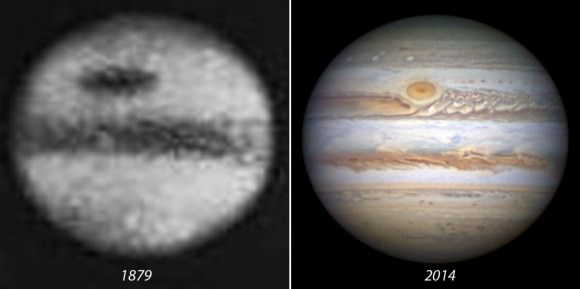
“A century ago, it truly was deserving of its name!” wrote Peach.
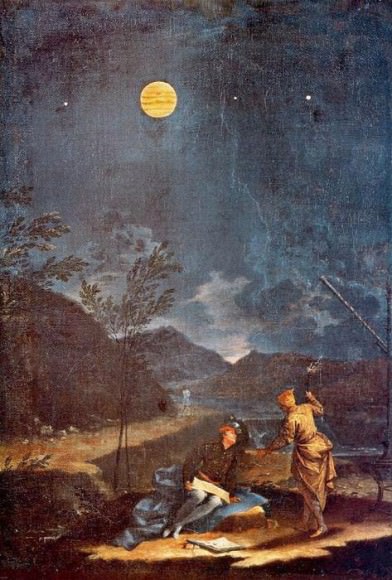
The shrinking of the Great Red Spot isn’t breaking news. You read about it here in Universe Today more than year ago. Before that, Jupiter observers had grumbled for years that the once-easy feature had become anemic and not nearly as obvious as once remembered. Astronomers have been following its downsizing since the 1930s.
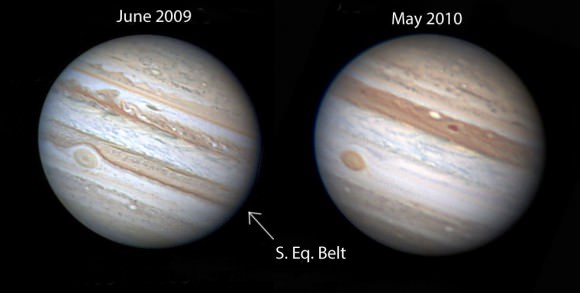
That doesn’t mean it’s necessarily going away, though if it did — at least temporarily — it wouldn’t be the first time. The Spot vanished in the 1680s only to reappear in 1708. Like clouds and weather fronts that keeps things lively on Earth, Jupiter’s atmosphere constantly cooks up new surprises. The entire South Equatorial Belt, one of Jupiter’s two most prominent “stripes”, has taken a leave of absence at least 17 times since the invention of the telescope, the last in 2010.
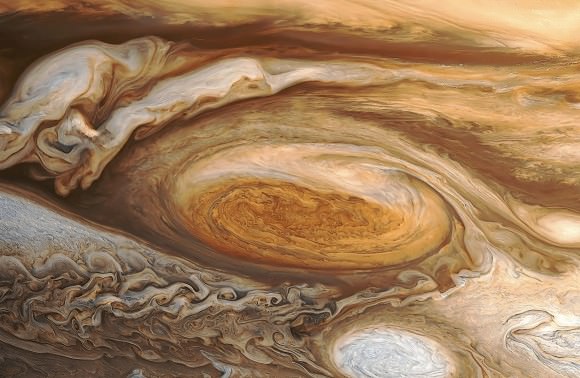
Perhaps we should turn the question around? How has the Red Spot managed to last this long? Hurricanes on Earth have lifetimes measured in days, while this whirling vortex has been around for hundreds of years. Any number of things should have killed it: loss of energy through radiation of heat to outer space, or energy-sapping turbulence from nearby jet streams. But the Eye persists. So what keeps it alive? Astronomers think the storm might gain energy by devouring smaller vortices, those small white dots and ovals you see in high resolution photos of the planet. Vertical winds that transport hot and cold gases in and out of the Spot may also restore its vigor.
Just in case it disappears unexpectedly, take one last look this observing season. Jupiter’s currently getting lower in the western sky as it approaches Venus for its grand conjunction on June 30. Below are times (Central Daylight or CDT) when it crosses or transits the planet’s central meridian. The GRS will be easiest to see for a 2-hour interval starting an hour before the times shown. It’s located in the planet’s southern hemisphere just south of the prominent South Equatorial Belt. Add an hour for Eastern time; subtract one hour for Mountain and two hours for Pacific. A complete list of transit times can be found HERE.
* June 13 at 8:58 p.m.
* June 18 at 12:16 a.m.
* June 18 at 8:08 p.m.
* June 20 at 9:47 p.m.
* June 22 at 11:26 p.m.
* June 25 at 8:57 p.m.
* June 27 at 10:36 p.m.

